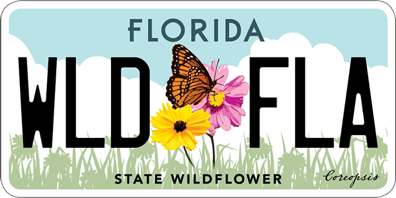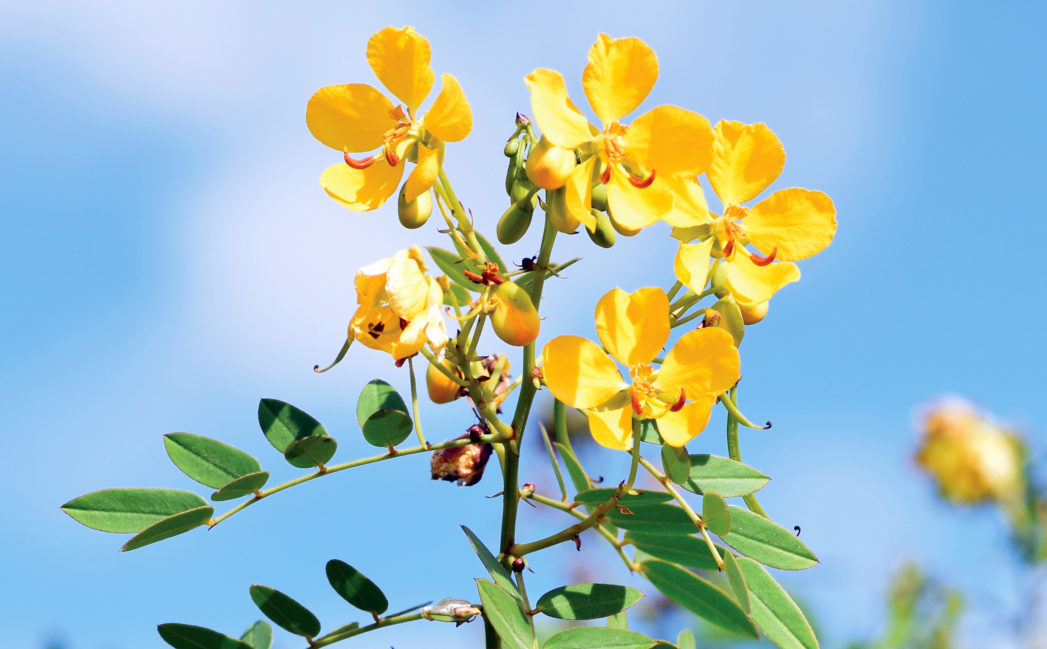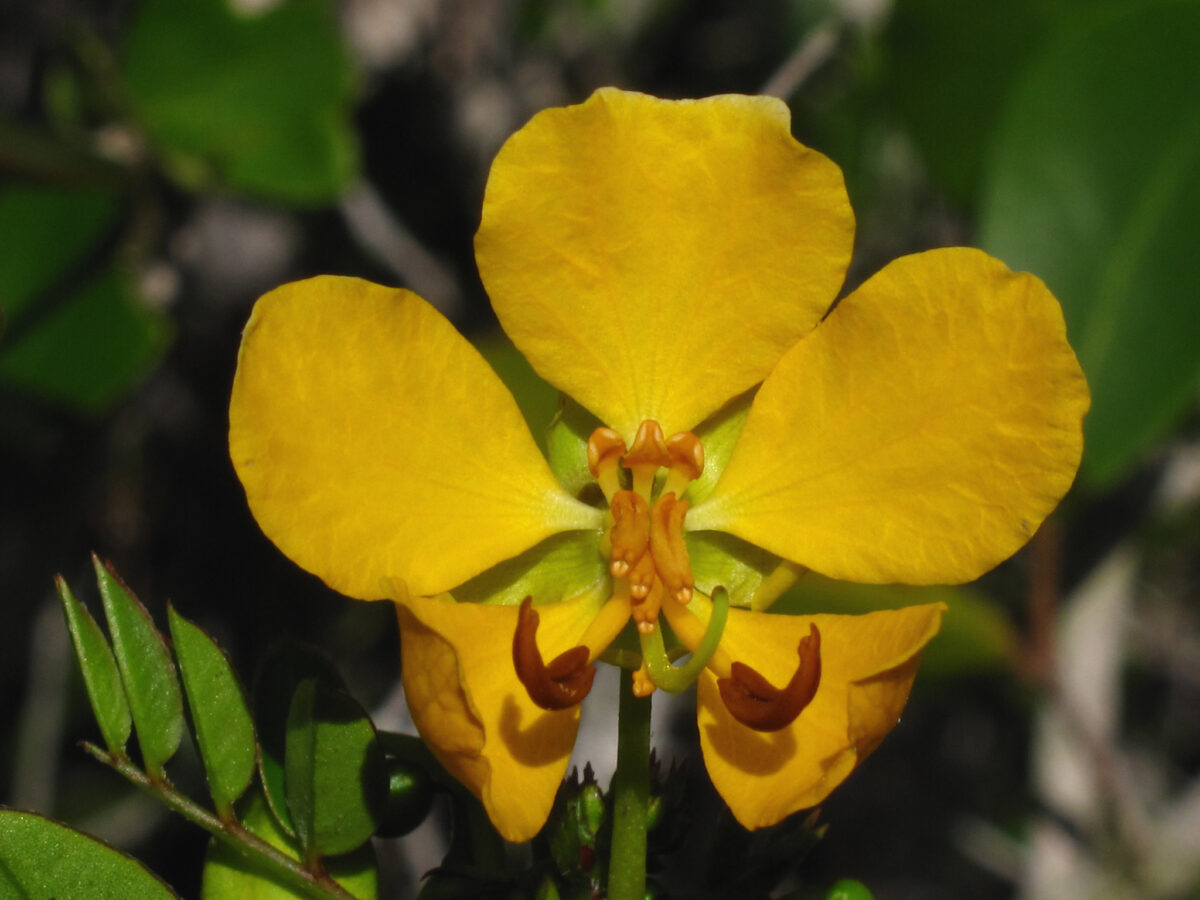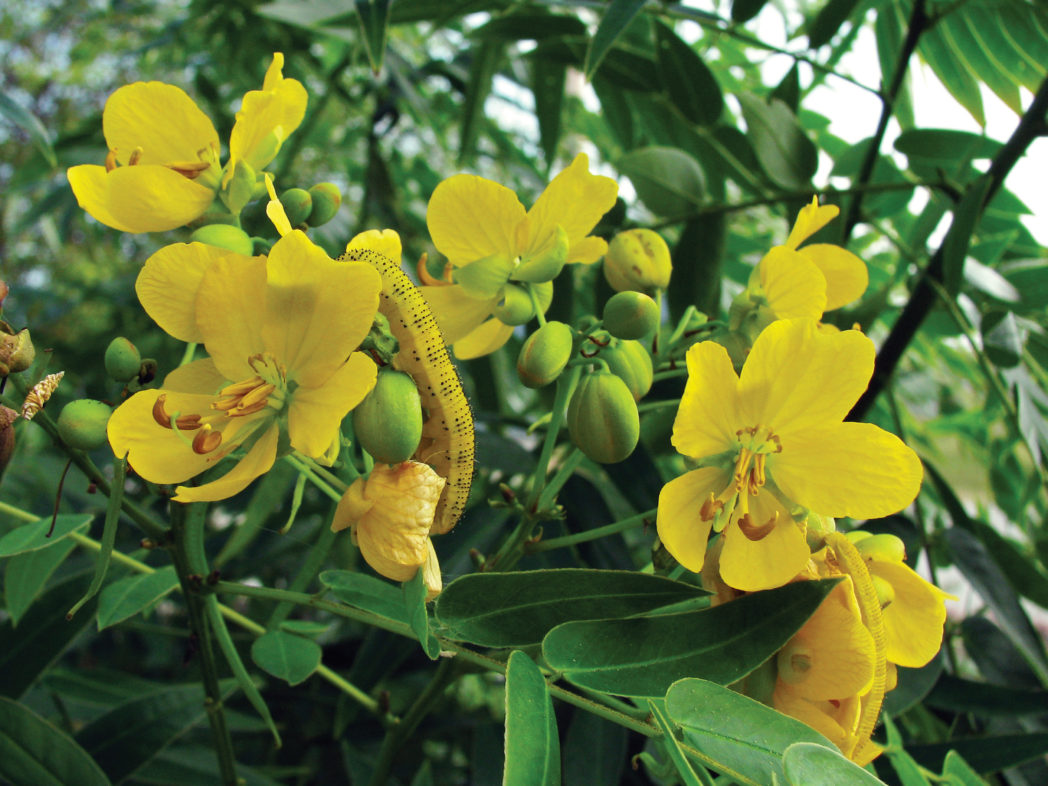Chapman’s wild sensitive plant
Pictured above: Chapman’s wild sensitive plant (Senna mexicana var. chapmanii) by Andrea Salas. Click on terms for botanical definitions. View post as a PDF.
Chapman’s wild sensitive plant (Senna mexicana var. chapmanii) is a robust evergreen perennial that occurs in pine rocklands, coastal stands and along hammock edges in Miami-Dade County and the Florida Keys. Due to its limited natural range, it is a state-listed threatened species. Its many flowers are visited by sweat, resin, cuckoo, leafcutter and bumble bees for their pollen and nectar. Butterflies such as the Sleepy orange, Little yellow, Cloudless, Orange-barred and Statira sulphurs are also frequent visitors. All members of the Senna genus are larval host plants for Sulphur caterpillars.
The plant’s flowers are born in stalked clusters. They have five buttery-yellow petals with subtle red venation. Each bloom has seven stamens with reddish anthers. Leaves are pinnately compound and alternately arranged. Leaflets are dark-green and linear to elliptic with pointed tips. A gland at the base of the lowermost leaflets attracts ants that attack caterpillars. Stems are glabrous. Seeds are born in slender brown pods.
Family: Fabaceae (Legume, bean or pea family)
Native range: Miami-Dade County and the Florida Keys
To see where natural populations of Chapman’s wild sensitive plant have been vouchered, visit florida.plantatlas.usf.edu.
Lifespan: Perennial
Soil: Dry to slightly moist, well-drained calcareous soils
Exposure: Full sun to minimal shade
Growth habit: 2–4’+ tall and sprawling
Propagation: Seeds
Florida regions of landscape suitability: South
Garden tips: Chapman’s wild sensitive plant is drought but not cold tolerant and may die if exposed to below-freezing temperatures. The plant may require occasional pruning. Removal of seed pods will help the plant remain attractive when not in flower and will help decrease unwanted seedlings. Chapman’s wild sensitive plant grows quickly. Interesting foliage and bright, showy flowers that bloom year-round make it a great ornamental specimen.
Caution: Many non-native Senna species are sold commercially. In particular, Christmas senna (S. pendula), or Butterfly senna, is often recommended for butterfly gardens. However, the Florida Invasive Species Council lists it as a Category I invasive species known to alter native plant communities. It should be avoided.
Chapman’s wild sensitive plant is often available at nurseries that specialize in Florida native plants. Visit PlantRealFlorida.org to find a native nursery in your area.
Learn more about Chapman’s wild sensitive plant from the Florida Native Plant Society and the Institute for Regional Conservation.
For information on other Senna species, see these resources:



